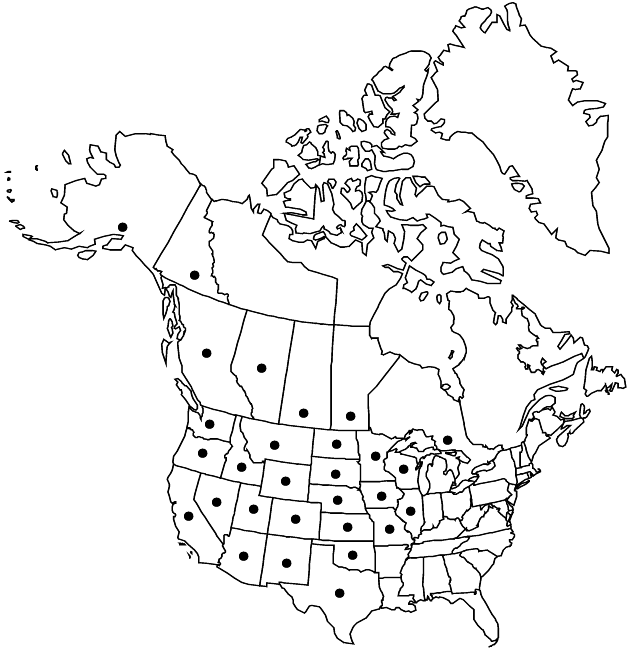Artemisia dracunculus
Sp. Pl. 2: 849. 1753.
Perennials or subshrubs, 50–120(–150) cm, strongly tarragon-scented or not aromatic; rhizomatous, caudices coarse. Stems relatively numerous, erect, green to brown or reddish brown, somewhat woody, glabrous. Leaves: proximal blades bright green and glabrous or gray-green and sparsely hairy, 5–8 cm; cauline blades bright green (gray-green in desert forms), linear, lanceolate, or oblong, 1–7 × 0.1–0.5(–0.9) cm, mostly entire, sometimes irregularly lobed, acute, usually glabrous, sometimes glabrescent (deserts). Heads in terminal or lateral, leafy, paniculiform arrays 15–45 × 6–30 cm; appearing ball-like on slender, sometimes nodding peduncles. Involucres globose, 2–3 × 2–3.5(–6) mm. Phyllaries (light brown, broadly lanceolate, membranous): margins broadly hyaline, glabrous. Florets: pistillate 6–25; functionally staminate 8–20; corollas pale yellow, 1.8–2 mm, eglandular or sparsely glandular. Cypselae oblong, 0.5–0.8 mm, faintly nerved, glabrous. 2n = 18.
Phenology: Flowering mid summer–late fall.
Habitat: Open meadows and fields, desert scrub, moist drainages, roadsides
Elevation: 500–3000 m
Distribution

Alta., B.C., Man., Ont., Sask., Yukon, Alaska, Ariz., Calif., Colo., Idaho, Ill., Iowa, Kans., Minn., Mo., Mont., Nebr., Nev., N.Mex., N.Dak., Okla., Oreg., S.Dak., Tex., Utah, Wash., Wis., Wyo., Eurasia.
Discussion
Artemisia dracunculus is widely cultivated as a culinary herb and may be introduced in parts of its range. It is easily cultivated from rootstocks, and while establishment from seeds is rare, seedlings can be found with amenable environmental conditions. Because of its popularity as an herb, it may suffer from overcollecting. Its scarcity in Missouri, Iowa, and Illinois (J. T. Kartesz and C. A. Meacham 1999) may have been caused by overly enthusiastic collecting as well as habitat loss.
Selected References
None.
